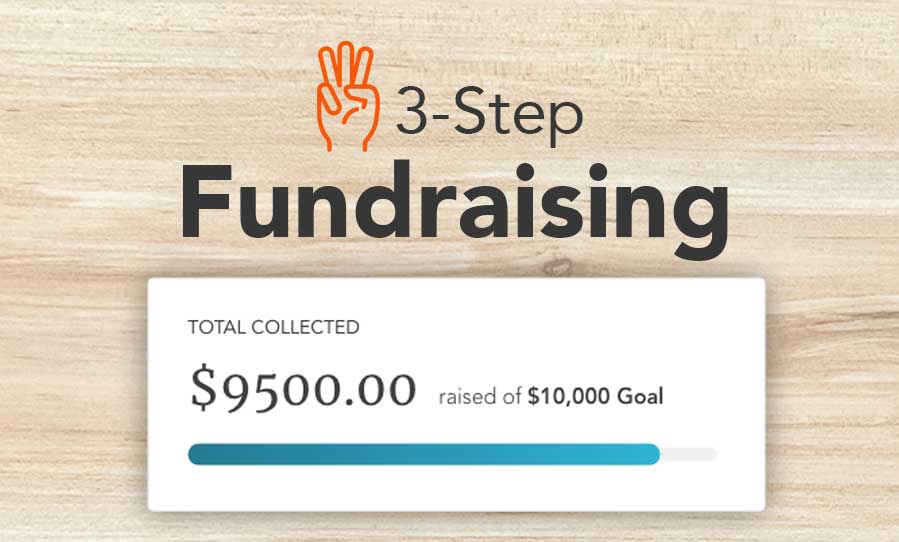Online Fundraising: Effective Digital Campaigns for Nonprofit Success
Online Fundraising: Effective Digital Campaigns for Nonprofit Success
Blog Article
The Duty of Community Engagement in Nonprofit Fundraising: Structure Lasting Relationships for Sustainable Support
Community engagement is significantly acknowledged as a critical part of effective nonprofit fundraising. By fostering real connections with regional stakeholders, companies can grow trust and commitment, which are vital for sustainable support. Nonetheless, the strategies and techniques used to engage areas vary commonly, increasing vital questions regarding performance and effect. What are the most effective techniques for cultivating these necessary connections, and how can nonprofits measure their success in this sector? Comprehending these characteristics could significantly affect the future of fundraising initiatives and the overall objective of nonprofit companies.
Comprehending Neighborhood Engagement
Area involvement is a crucial part of successful nonprofit fundraising initiatives. It describes the approaches and tasks that companies use to get in touch with their regional communities, fostering relationships that are mutually advantageous. Understanding area engagement involves recognizing its multifaceted nature, that includes involvement, partnership, and outreach. Nonprofits must determine essential stakeholders-- such as area participants, local organizations, and various other companies-- to produce reliable engagement approaches.
Effective area interaction is asserted on active listening and responsiveness to the needs and rate of interests of the area. This procedure entails soliciting feedback, recognizing neighborhood characteristics, and making sure that the organization's objective lines up with regional concerns. Involving the area can take different kinds, including public conferences, volunteer opportunities, and collaboration initiatives, each designed to urge involvement and investment in the organization's goals.
Moreover, neighborhood interaction must be approached as a recurring dialogue instead than an one-time effort. By promoting a comprehensive environment where community voices are listened to and valued, nonprofits can construct a strong structure for future fundraising ventures. Ultimately, a deep understanding of neighborhood engagement empowers companies to create genuine connections that boost their total efficiency and sustainability.
Benefits of Solid Relationships
Strong partnerships formed with community involvement yield countless benefits for not-for-profit fundraising efforts. Firstly, these relationships foster depend on and reliability, essential components in encouraging donors to contribute. When potential fans see a nonprofit actively included in their neighborhood, they are extra most likely to think in its goal and influence.

In addition, these connections promote efficient communication. Nonprofits can take advantage of their links to share stories of impact, updates, and needs, making certain that fans continue to be enlightened and engaged. This open line of communication not just enhances bonds yet also motivates word-of-mouth promotion, increasing the nonprofit's reach.
Lastly, solid area connections can draw in new partners and enrollers. Individuals and companies are more likely to straighten with organizations that demonstrate meaningful community participation, supplying additional sources and support that can considerably improve fundraising abilities. Therefore, cultivating durable relationships through area engagement is indispensable to a nonprofit's long-term fundraising informative post success.
Techniques for Effective Engagement
How can nonprofits properly involve their communities to enhance fundraising efforts? Regular updates, involving web content, and calls-to-action can galvanize community interest and engagement.
2nd, hosting area events, such as workshops, volunteer chances, or fundraising drives, promotes in person communication, permitting nonprofits to showcase their effect and efforts. These events not just increase funds however additionally cultivate relationships and allow community members to engage straight with the cause.
Third, executing individualized interaction methods can boost involvement. Customizing messages to details contributor sections based upon interests and past contributions cultivates a sense of belonging and investment in the company's objective.
Finally, producing collaborations with regional organizations and neighborhood leaders can amplify outreach initiatives. Joint efforts can improve presence and reliability, showing a cumulative commitment to the community's health. By incorporating these strategies, nonprofits can build lasting partnerships that enhance fundraising initiatives and drive sustainable assistance.
Gauging Engagement Success
While engaging the community is crucial for effective nonprofit fundraising, measuring the efficiency of these interaction efforts is equally crucial. Developing clear metrics allows organizations to evaluate just how well they are attaching with original site their target market and achieving their fundraising goals. Key efficiency indicators (KPIs) such as contributor retention rates, volunteer engagement levels, and interaction on social media sites platforms offer tangible information for evaluation.

Routinely assessing these metrics allows organizations to pivot their strategies when needed, guaranteeing that area engagement remains straightened with their overall goal. Furthermore, sharing these outcomes with stakeholders cultivates transparency and constructs trust, motivating further neighborhood involvement. Eventually, a durable dimension structure not just informs future fundraising campaigns but also reinforces the relationship between the not-for-profit and its advocates, preparing for sustainable success.
Situation Research Studies in Area Influence
Various case researches show the extensive influence that area interaction can have on nonprofit fundraising success. One notable example is the "Something to chew on" effort, where a regional food bank partnered with colleges and services to host community suppers. These events not just raised funds check over here however additionally fostered a feeling of belonging amongst individuals, dramatically boosting benefactor retention rates.
One more engaging situation is the "Green Spaces Job," which included neighborhood residents in the revitalization of metropolitan parks. This effort not just gathered financial backing from neighborhood organizations but likewise cultivated a volunteer base that contributed to recurring upkeep and programs. The feeling of possession and satisfaction among community members equated into sustained payments.
In the realm of arts, the "Art for All" campaign successfully engaged regional musicians and patrons to produce joint art installations, resulting in raised visibility and donations for a regional arts not-for-profit.
These examples highlight that when nonprofits focus on neighborhood participation, they can develop long lasting partnerships that boost fundraising initiatives, ensuring sustainable support and cultivating a vibrant area culture. Such instances demonstrate that community interaction is not simply a technique yet a necessary column of not-for-profit success.
Final Thought
To conclude, neighborhood involvement is important to the success of not-for-profit fundraising initiatives. By cultivating strong connections with local stakeholders, companies boost trust fund and reputation, resulting in boosted donor retention and loyalty. Executing efficient interaction strategies and gauging their influence makes sure that nonprofits can prosper and adjust. Inevitably, a robust structure of neighborhood support not only intensifies fundraising possible however likewise cultivates a society of partnership, vital for achieving long-term organizational goals and maintaining purposeful impact.
Nonprofits should recognize essential stakeholders-- such as neighborhood participants, local companies, and other companies-- to create efficient interaction strategies.

In conclusion, neighborhood involvement is important to the success of not-for-profit fundraising efforts.
Report this page